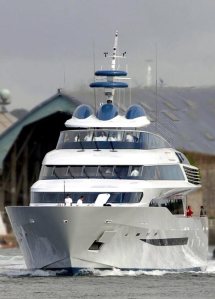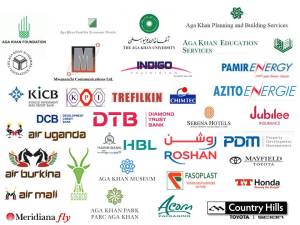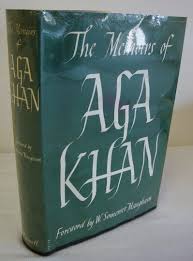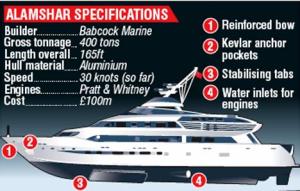One of Canada’s most reputed news source, The Toronto Star has reported Aga Khan Foundation for “lack of transparency” and as one of the charities which do not release their audited financial statements to the public and refused to provide them to an independent agency that evaluates charities. The report can be seen here:
Aga Khan Foundation is ‘ethically’ bound, if not legally
Charities are not legally bound to disclose their audited financial statements to the public, but it is considered ethical to do so because they take in public dollars, said Greg Thomson, director of research for charityintelligence.ca.
 When charityintelligence.ca requested Canada Revenue Agency to dig up the The Aga Khan Foundation Canada (AKFC), it was revealed that Aga Khan Foundation had “enough cash-in-hand to operate for up to 8 years without raising even a single penny.”
When charityintelligence.ca requested Canada Revenue Agency to dig up the The Aga Khan Foundation Canada (AKFC), it was revealed that Aga Khan Foundation had “enough cash-in-hand to operate for up to 8 years without raising even a single penny.”
This is a staggering amount of cash-in-hand, and something major to consider for the donors whether they want to donate to a charity where their money could lie idle for almost a decade as compared to donating to charities which have immediate and sometimes urgent need for donations.
CharityIntelligenca.ca also reported that:
• Aga Khan Foundation received $41.9m in government funding in 2013.• Aga Khan Foundation also gives away a salary between $300,000 – $350,000 to its Chief Executive Officer.• Aga Khan Foundation holds significant ‘idle’ property valued at $346.2m in F2013, including $27.3m acquired in F2013 and $43.3m in F2012.
The monies collected by Aga Khan Foundation are distinct from those collected within the Ismāʿīlī Centers around the world from members of the Ismāʿīlī community in the name of tithe (also called dasond) to the Aga Khan. These collections too, are often cited for lack of transparency and allocation. While a small percentage of these funds collected in the name of tithe are visibly used for administrative costs for the Ismāʿīlī Centers, the whereabouts of a large chunk of these collections is unknown.
Many of the institutions established by the Aga Khan are profit-based such as Aga Khan Hospital and Aga Khan Museum. Both of these are run like any other business and Aga Khan Hospital in particular is reputed to be the most expensive hospital in the territories it operates – in Nairobi, Kenya and in Karachi, Pakistan.
Lack of transparency for the public charity like the Aga Khan Foundation, coupled with the same lack of transparency for the tens of thousands of dollars of tithes collected in the name of Aga Khan around the world in Ismāʿīlī Centers (also called Jamatkahanas) around the world, together with Aga Khan’s lavish lifestyle, has only increased the level of distrust towards the Aga Khan from within the community and from outsiders such as the Toronto Star.
One glaring example of such lavish expenditures by the Aga Khan is the hundreds of millions of dollars he has invested in a super-yacht called Alamshar which has been 13 years in the making. Aga Khan ordered the boat to be built to break the world speed record for super-yachts of 65 knots, as well as beat the transatlantic record of two days, ten hours and 34 minutes – an average speed of 53.1 knots – set in 1992. When the yacht was initially delivered, it only attained a speed of 30 knots during sea trials off Plymouth. The Aga Khan went on to hire a firm of top international maritime lawyers to handle any potential claim against boatbuilders Babcock Marine, who own Devonport naval dockyard where the Alamshar was built.
During an initial test, the turbine blades in its three Rolls-Royce gaspowered engines – which were originally designed for Sea King helicopters – burnt out. They were replaced with engines made by Rolls’s US rivals Pratt & Whitney, which were used to drive water jets.
A source said: “This was supposed to reach 60 knots but it can go only half that speed, so the Aga Khan is taking legal advice. He’s not a happy man.” The boat has cost over US$300 million.
 Another example of Aga Khan’s spending are the two divorce settlements. The recent one beingUS$75 million which he paid to his wife Gabriele zu Leiningen (formally known as Begum Inaara) as ordered by a French court after determining that Aga Khan was exclusively at fault due to having an extra-marital affair with an airhostess Beatrice von der Schulenburg.
Another example of Aga Khan’s spending are the two divorce settlements. The recent one beingUS$75 million which he paid to his wife Gabriele zu Leiningen (formally known as Begum Inaara) as ordered by a French court after determining that Aga Khan was exclusively at fault due to having an extra-marital affair with an airhostess Beatrice von der Schulenburg.
Before this, Aga Khan paid US$30 million to his first wife Sally Crocker-Poole who was formally known as Begum Salimah during their marriage. She now lives in London with Philippe Lizop, the French lawyer who secured her divorce settlement.
A Bloomberg report in 2005 said that unlike the pope, who received $51.7 million in 2004 from Catholic contributions known as Peter’s Pence, the Aga Khan won’t say how much he raises from his followers each year or break out how the money is spent. Nor will he disclose all the sources of the $325 million that his development network, which has diplomatic status in 10 countries.
And he won’t give performance figures for the Aga Khan Fund for Economic Development SA, a Geneva-based holding company that owns stakes in 90 companies. All profits and dividends from the companies and projects are reinvested, he says.
The original Bloomberg report can be found here:
http://quote.bloomberg.com/apps/news?pid=nifea&&sid=aq1oK0lHLVgM
http://quote.bloomberg.com/apps/news?pid=nifea&&sid=aq1oK0lHLVgM
And it’ s mirror preserved on Ismaili.net can be found here:
http://www.ismaili.net/heritage/node/12292
http://www.ismaili.net/heritage/node/12292
In addition to money from his Ismaili followers, the Aga Khan obtains bank loans and grants from Western governments and aid organizations to finance his empire. The Aga Khan’s companies, with total sales in 2004 of $1.36 billion, stretch from Pakistan’s No. 2 lender, Habib Bank Ltd., to Kenyan bean farms, to the just-opened Serena Hotel in Kabul, where rooms start at $250 a night — about what the average Afghan makes in a year.
He also owns stakes in two car dealerships in Edmonton, Alberta: Mayfield Toyota Ltd. and T&T Honda Ltd.
He also owns stakes in two car dealerships in Edmonton, Alberta: Mayfield Toyota Ltd. and T&T Honda Ltd.

A collage few of the companies and agencies owned by the Aga Khan under the guise of Aga Khan Fund for Enocomic Development. A large majority of these companies are for-profit institutions.
The Aga Khan has also expanded the institutions started by his grandfather into a nondenominational network of 325 schools, two universities, 11 hospitals and 195 health clinics in 30 countries. Most of the institutions charge their clients — even the poorest — fees.
A 74-acre (30-hectare) public park he opened in March 2005 in Cairo charges three Egyptian pounds (52 U.S. cents) to enter.
In 2003, the Karachi-based Aga Khan University got $4.5 million from the U.S. Agency for International Development to start a new, Western-style exam board for schools. That angered conservative clerics and politicians who view the U.S. with suspicion.
In Afghanistan, the development network, the Aga Khan’s umbrella organization, has built schools, hospitals, roads and bridges and owns 51 percent of Roshan, the country’s biggest cell-phone service company.
The Aga Khan’s personal fortune includes stud farms in France and Ireland that have yielded four English Derby and three Prix de l’Arc de Triomphe winners since 1981. In the 1960s and 1970s, he developed a virgin strip of coast on the Italian island of Sardinia into Costa Smeralda, where Italy’s billionaire prime minister, Silvio Berlusconi, and others have vacation homes.
And in 1992, the Aga Khan and his friend Gianni Agnelli, the late Fiat SpA chairman, smashed the transatlantic speed record with their 220-foot (67-meter), 50,000-horsepower speedboat Destriero.
The Aga Khan currently owns an undeveloped piece of coast on the Spanish island of Ibiza, and he’s considering plans for a luxury development on Malta and a project to transform a military arsenal on the Italian island of La Maddalena into a harbor for big yachts, says Enzo Satta, 60, a Sardinian architect who says he has worked for the Aga Khan on the ventures.
Ismailis dismiss questions about the Aga Khan’s wealth and private life. “What’s important is the guidance he gives and the development of the unique network he has created,” says Naguib Kheraj, 41, a British Ismaili who’s chief financial officer of Barclays Plc, the U.K.’s third-biggest bank.
The companies held by AKFED (Aga Khan Fund for Economic Development) currently employ 30,242 people. It’s profits are undisclosed.
The Aga Khan owns all but seven of the fund’s 175,000 shares, according to the Registre du Commerce in Geneva. The fund is the economic arm of the Aga Khan Development Network, which also has units covering culture and social development projects such as schools and hospitals. The network employs 20,000 people.
The Aga Khan, who travels the world in a Bombardier Global Express jet, declines to comment on how much of the money for his philanthropy comes from his own personal wealth and how much from followers.
“I’ve never discussed my personal income, and I wouldn’t do that. Every generation of the family has made its investments, and fortunately, some of them have been very, very good indeed.”– Aga Khan IV
Money Laundering – A Secret Religious Duty?

Cover of Memoirs of Aga Khan. The Aga Khan confesses that he keeps a “small fraction” of dasond and mehmani money for himself.
In “The Memoirs of Aga Khan”, published by Cassel & Co. in London in 1954, the present imam’s grandfather wrote that he kept a “small fraction” of his followers’ offerings for himself.
Lack of transparency got an Ismaili leader into jail in the U.S. On May 18, 1987, Nizamudin Alibhai, an Ismaili community leader in Texas, boarded an American Airlines flight from Dallas-Fort Worth Airport to London’s Gatwick Airport with $1.1 million stuffed in a burgundy flight bag.
Prosecutor Stewart Robinson said Alibhai took $27.3 million out of the U.S. on a total of 33 journeys, breaking a law requiring transfers of more than $10,000 to be declared. Alibhai was charged in Dallas with money laundering for five specific transatlantic journeys, in which he took a total of $4.3 million to London from 1985 to 1987. He was sentenced to seven years in prison.
Alibhai’s lawyer said he was performing a secret religious duty. In his memorandum in support of the motion for a reduction of the sentence, defense lawyer Vincent Perini wrote, “A history of persecution by repressive African governments and fundamentalist Muslim groups have required the Ismailis to keep their activities private.”
The cash was deposited in London because there were no reporting requirements in the U.K. at the time, Perini wrote. His memorandum also included a letter dated March 8, 1990, from Fried, Frank, Harris, Shriver & Jacobson LLP, the imam’s Washington-based lawyers, which said the Aga Khan had set up a U.S. bank account for Ismaili tithes following the trial.
“Our client does not direct or control the system of offerings,” the letter said. “The contributions, and their collection, have always been conducted by volunteers. These offerings are then primarily used by the Aga Khan to support religious activities and to support a multitude of development projects in the third world.”
Funding Sources
The Aga Khan’s followers are unable to answer detailed questions about the sources of funds for their projects. Sher Lakhani, a Canadian Ismaili manager of Geneva-based Aga Khan Education Services SA, doesn’t know the breakdown of the $20 million used to build a high school in Mombasa on Kenya’s coast.
Mahmud Jan Mohamed, Nairobi-based managing director of Serena Hotels, doesn’t know how much of the $19.3 million plowed into the Kabul hotel in the Aga Khan’s name came from the imam and how much came from Ismailis. “All I know is, construction has never been stopped for lack of funds,” says Mohamed, 52, a Kenyan Ismaili.
Some of the money for the Aga Khan’s projects comes from grants and loans from Western governments through organizations like theU.S. Agency for International Development. In 2004, the Aga Khan Foundation, which kick-starts health, education and rural development projects, got commitments of $71 million from donors like the U.S. government, says Tom Kessinger, 64, the foundation’s American general manager.
Partnerships and Funding from World Bank and Blackstone
“The staff is among the most qualified in the region,” says Dwight Smith, USAID’s assistant mission director in Kenya. USAID granted $35 million to the Aga Khan’s projects in Asia and Africa from 1999 to 2004, says Harry Edwards, a Washington-based spokesman for the organization.
The Aga Khan’s companies borrow from commercial and development banks and raise funds from investors. In 2003, the World Bank’sInternational Finance Corp. unit lent $7 million to help build the $36 million Serena Hotel in Kabul.
Development funds owned by the Norwegian and Dutch governments also invested $5 million each in the hotel. In April 2005, Afghan mobile-phone company Roshan got $35 million from the Asian Development Bank, which is owned by a group of Asian governments.
Commercial partners include Blackstone Group LP, which is raising the world’s biggest buyout fund. In Uganda, the Aga Khan’sIndustrial Promotion Services is planning a $500 million hydroelectric dam with Blackstone’s Sithe Global Power LLC, a New York-based power producer.
In Afghanistan, the Aga Khan’s partners include a company controlled by Bracknell, England-based Cable & Wireless Plc, which owns 37 percent of Roshan. The Afghan cell-phone company has raised more than $160 million of loans since 2002, with $24.5 million coming from the Aga Khan Fund for Economic Development, says Altaf Ladak, Roshan’s chief marketing officer.
Roshan has 600,000 customers and 500 employees. The company is profitable, says Chief Executive Officer Karim Khoja, a Canadian Ismaili. He won’t say how much it earned on sales of $93 million in 2004.
In remote tribal areas, where women traditionally wear head-to-toe burqas and aren’t allowed out of family compounds, Roshan has found a way of boosting its sales and helping vulnerable women with no male relatives: The company uses them as sales representatives, selling them prepaid phone cards to sell to other women.
Nation Media is one of 16 Kenyan companies in which the Aga Khan’s fund for economic development owns stakes. The others include Frigoken, the bean exporter, and the Kenyan unit of Serena Hotels, Tourism Promotion Services Ltd., which is also listed on the Nairobi Stock Exchange.
In Mombasa he has a $20 million school built out of white coral-rock bricks and modeled after Andover, Massachusetts-based Phillips Academy, whose alumni include U.S. President George W. Bush and the Aga Khan’s son, Prince Rahim.
Religion isn’t even part of the syllabus at the school, which opened in 2003 and has 525 students, ages 5 to 19. Fees at the academy are $2,700 a year — more than double the average Kenyan’s annual income.
Aga Khan also owns Property Deelopment and Management (PDM) – a luxury development company in Kenya which has built and manages high-profile projects such as Nation Centre in Kenya’s Central Business District, Courtyard along General Mathenge Drive, Westlands and the DTB Centre in Kampala.
PDM is also a part of Aga Khan Development Network, (AKDN), and its major shareholders are Aga Khan Fund for Economic Development (AKFED), Jubilee Holdings Limited, and Nation Media Group Limited, both of which are part of AKDN.
Conclusion
It appears that the Aga Khan’s confession of ‘keeping a small fraction’ of dasond (tithe) money for himself has grown more than just being a small fraction. Until there is transparency in the collection and disbursement of dasond (tithe) money, Ismailis as well as non-Ismailis will always be doubtful of where the dasond money goes.











